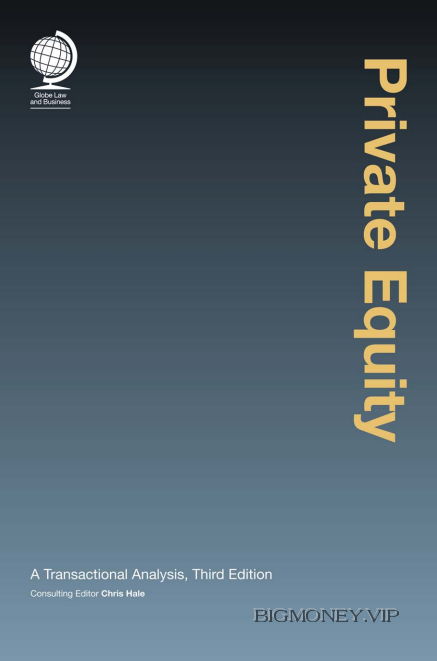Private Equity: A Transactional Analysis, Third Edition by Chris Hale

Introduction
Chris Hale
Travers Smith LLP
- Background
Fifteen years ago, private equity was known as venture capital and operated at the
fringes of corporate finance and corporate activity. By 2007 it had taken centre stage,
with many household names and some large companies becoming private equityowned. The post-Lehman financial crisis posed tough challenges for private equity but
it emerged from that crisis in much better shape than many had predicted. So what is
private equity, and why did it become so successful that it was viewed in some western
economies as central to corporate finance and mergers and acquisitions activity?
In the United Kingdom, continental Europe and much of the rest of the world,
‘private equity’ means the equity financing of unquoted companies at many stages
in their lifecycle, from start-up to expansion to management buyouts and buy-ins of
established companies. ‘Venture capital’ is seen, in the United Kingdom at least, as a
subset of private equity, covering the seed to expansion stages of investments.
The key elements of private equity are:
• investments in unquoted companies;
• equity capital by nature;
• medium- to long-term investments; and
• targeted at companies with growth potential.
Private equity is invested in exchange for a stake in a company; as shareholders,
the investors’ returns are dependent on the cash flows, growth and profitability of
the business. Private equity emerged on the UK landscape in the post-war period, and
saw its key period of growth from the late 1980s and in particular from the late
1990s. In 1981 there were just 44 private equity firms active in the United Kingdom,
according to the British Private Equity & Venture Capital Association (BVCA). The
BVCA now has some 200 private equity house members.
The Centre for Management Buyout Research (CMBOR) reported that in 1986
there were 370 buyouts in the United Kingdom, in which £1.4 billion was invested.
By 1996 the number had risen to 647 and the amount invested to £7.7 billion. In
2007 – the high-water year in terms of value – there were 630 buyouts, in which
£46.5 billion was invested. The consequences of the recent financial crisis can be
seen in the statistics for 2009: only 370 deals were recorded by CMBOR, and just £5.5
billion was invested in these transactions. By 2013 the value of buyouts had shown
considerably recovery, to £15.8 billion for that year according to CMBOR. Volumes,
though, had not, 367 being recorded for 2013. - How important is private equity?
Each year, for nine years up to February 2008, the BVCA commissioned research from
IE Consulting on the economic impact of private equity. The February 2008 report
indicated as follows:
• Companies that have received private equity backing account for the
employment of around 3 million people in the United Kingdom, equivalent
to 21% of the UK private sector workforce. Approximately 1.1 million people
were employed at the time of the report by companies then backed by private
equity, equivalent to 8% of UK private sector employees;
• Private equity-backed companies generated total sales of £310 billion and
contributed more than £35 billion in taxes; and
• Over the five years to 2006/2007, employment rates and sales all grew faster
in private equity-backed companies than in FTSE 100 and FTSE Mid-250
companies.
This research also showed that during the five-year period to 2006/2007, UK
private equity-backed companies increased their worldwide staff levels by an average
of 8% per annum. This was significantly faster than the rate of growth of FTSE 100
and FTSE Mid-250 companies, at 0.4% and 3% respectively.
The effect of private equity on employment has in recent years been a
particularly contentious issue. Research conducted by CMBOR on the employment
effects of buyouts since 1985 broadly supports the IE Consulting findings, although
there does seem to be a difference between management buyouts and management
buy-ins, with the latter experiencing slower employment growth.
Private equity is even more important to those working in the mergers and
acquisitions market. According to research published by CMBOR, buyouts accounted
for 47% by number and 49% by value of total UK mergers and acquisitions in 2005,
percentages sustained in the years leading up to the onset of the financial crisis.
Reflecting the low level of UK mergers and acquisitions activity since 2008, these
proportions have risen in recent years with buyouts accounting for 60% of UK
mergers and acquisitions volume in 2013 and 67% of value.
In each of the three years up to 2008, record amounts were raised by private
equity fund managers; $10 billion-plus funds became almost common. It is in part a
result of this sheer weight of money that private equity pushed into ever-larger deal
territory, in 2007 in particular. That year saw the first, and so far only, take-private of
a FTSE 100 company: Alliance Boots.
The financial crisis caused private equity fund raising to slump but by 2013,
according to research group Preqin, it had recovered to levels approaching those seen
before the financial crisis. Indeed Preqin reported that at the end of September 2014
a record high of $1.19 trillion was available to private equity fund managers for
investment globally. Funds of $10 billion or more disappeared from the landscape for
Private Equity: A Transactional Analysis, Third Edition by Chris Hale




